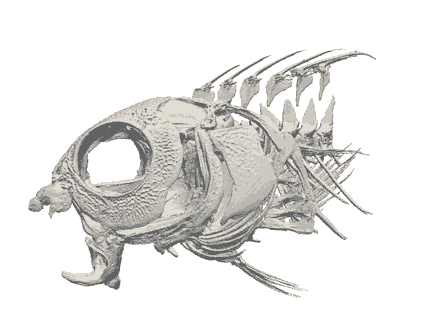Scientists have discovered a chemically unique venom in small tropical fish known as fang blennies. Unlike most venomous creatures, blennies don't use this venom for capturing prey - they use it to escape their predators by getting them high.
These brightly coloured blennies are a popular choice for home aquariums, but it turns out they harbour a fascinating evolutionary secret in their (relatively) giant fangs.
Being small, fang blennies are constantly under threat from any predator that can gobble them up whole. But if they happen to end up in something else's mouth, they can sink their powerful lower canines into the predator to slacken its jaw, and swim away unharmed.
This behaviour was first described more than 40 years ago by zoologist George Losey, who also tested the blenny venom on some mice and… himself. But until now, no one was sure how the venom actually worked.
"The toxicity of the bite of Meiacanthus atrodorsalis was assayed by force-biting the tails of two white laboratory mice and my hand," Losey wrote in his 1972 paper. "Subsequent observations were inadvertently provided by bites in the more tender area of my hip."
Now an international team of biologists has finally discovered what compounds are found in the venom that blennies from the Meiacanthus genus readily injected in Losey's skin back in the '70s.
Typically, you would expect a venomous fish bite to deliver excruciating pain - there are at least 2,500 venomous fishes in the wild, and all of them deliver the venom through spines on their fins, tails, or backs. A brush with one of those can leave you in agony for days.
But fang blenny venom is totally different. They are only one of two fish species that inject venom via biting, like a snake would. (The other species is a deep-sea eel scientists know very little about.)
And not only does fang blenny venom cause no pain - it contains opioid hormones that we're used to thinking of as painkillers.
"Its venom is chemically unique. The fish injects other fish with opioid peptides that act like heroin or morphine, inhibiting pain rather than causing it," says co-lead researcher Brian Fry from the University of Queensland in Australia.
 CT scan of a venomous fang blenny/Anthony Romilio
CT scan of a venomous fang blenny/Anthony Romilio
As team member Irina Vetter clarified to Ed Yong at The Atlantic, this doesn't mean the blenny venom acts as a painkiller in the predator:
"These substances have to be released in the brain to have that type of activity. It's unlikely that they would relieve pain when we're bitten by a fish because they can't get into the brain that way."
Instead, the researchers think the venom crashes the predator's blood pressure, making them faint and dizzy, which loosens their grip and lets the blenny escape.
Apart from analysing the cool venom, the team also investigated other mechanisms blennies use to protect themselves, such as mimicry. Blennies are a pretty large group of fish, and even among the ones with fangs, most haven't evolved these impressive venom glands.
The team discovered that many types of harmless coral reef fish, including non-venomous fang blennies, freeride on this evolutionary feat. They copy the colour patterns and the swimming style of venomous blennies, and successfully go about their fishy lives without being eaten.
Venom research is an exciting field that lets scientists discover new compounds for potential use in medicine, such as alternatives to current painkillers or a drug that protects people from stroke.
Snakes, scorpions and spiders are the usual suspects for this kind of research, but with so many venomous fish out there, we could find some useful chemicals in them, too.
The research was published in Current Biology.
